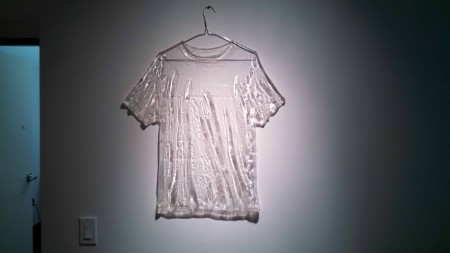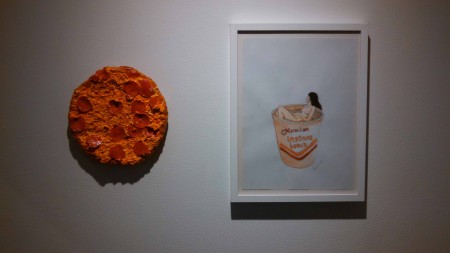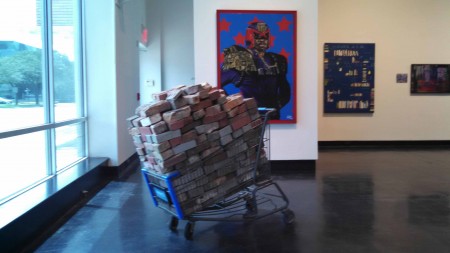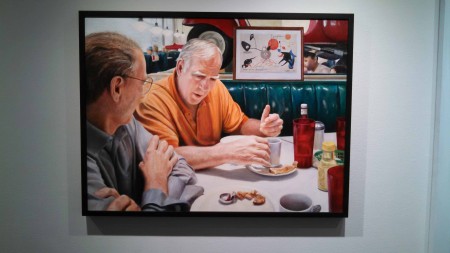To be an artist is to be a perpetual reject. That is why we are constantly trying to find ways to “hack” submissions, to catch juries red-handed rejecting something good for bad reasons. Stories abound nowadays of a writer submitting with both female and male names to see which gets accepted first, or submitting already-published renowned stories to the New Yorker slush pile to gauge whether the submission process is actually based upon merit, or, more nefariously, white people submitting with an ethnic name to “hack” “affirmative action.” Me, I’ll leave the lying to more bitter writers and get my giggles pretending to be a juror at the Salon des Refusés.

As a relatively new Houston transplant, I found out about the Salon des Refusés before the Lawndale Art Center’s “Big Show,” an annual juried exhibition inaugurated in 1984 open to artists within a hundred-mile radius of their building in Houston’s museum district. With so many artists in the nation’s fourth-largest city, that makes space for a heap of rejection letters. Emily Sloan founded the Houston Salon des Refusés in 2010 to honor the leftovers; the only criteria for inclusion are to drop off the artwork at the gallery with a rejection email. This year, the Salon changed hands to Stäcy Smith and Claire Richards, gallery curators at Hardy & Nance Studios.
Sure, there’s a rich tradition behind the Salon—it’s inspired by the 1863 Paris event of the same name, which included rejected artists like Édouard Manet—but god, how titillating for the viewer, getting to play judge. To self-righteously decide which pieces are in the wrong exhibit—to perhaps see justice in plain sight, when juries are typically so hidden! Needless to say, I set myself up for disappointment with this false authority—but damn if it didn’t make things more interesting.
I went to the Big Show first, on opening night. Guest jurors Apsara DiQuinzio of the UC Berkeley Art Museum and Pacific Film Archive and Tina Kukielski of New York’s ART21 reviewed 1,389 works by 517 artists, from which they selected 105 works by 87 artists. Lawndale can be commended for nixing their usual submission fee this year to make submitting more accessible; they set a record for number of submissions this year. The value, it seems, comes in these 87 artists bringing all their friends to opening night. And bring them they did; there was barely enough room to squeeze past each piece, let alone ruminate.


If I were a snide bitch, I might call the theme of the Big Show “elevated Etsy”: bright pop ready to be co-opted by Urban Outfitters. Though that label’s unfair to many of the thoughtful and dazzlingly pieces, and is certainly inaccurate in terms of the artists’ skills, one would struggle to find a piece in the Big Show that’s truly subversive or inordinately challenging. I’m not sure if that denotes a trend among Houston artists, or a necessary move by the curators: what are they supposed to do with 1,389 submissions? They have to be definitive about a vibe; they were, and it’s a success.\
Though the bulk of the exhibition can hang on a wall, the large sculptures made a particularly strong showing, and not just because of their size. Kelly O’Brien’s “Self-Made” depicts a life-sized manikin hacking himself out of a stump with an axe, with several smaller versions taunting him from the bits of wood. James Kerley’s “Agility Test (Difficulty Level 5)” made me swoon; while its shape suggests a type of dog-show agility test, the fact that it’s made of crocheted yarn and lies flat on the floor mocks any idea we may have had of a meaningful victory.


Iva Kinnaird’s ”Broke, Please Advise,” a Wal-Mart shopping cart loaded up with bricks to the point of collapse, is one of the pieces that feels most quintessentially Houston. Although homeless populations in all cities use shopping carts for their earthly possessions, Houston breeds veritable shopping cart caravans in some areas; with so much pavement, so many big-box stores and so few pedestrians, it’s no wonder. Another telltale Houston piece: I actually thought Patti Lennon’s watercolor, “The Gentrification of Freedman’s Town,” was a photograph at first, so common is the sight of luxury apartment buildings towering above weathered shotgun houses these days. But, hardship and gentrification are not the only aspects of Houston reflected in the Big Show. I love David P. Gray’s almost photorealistic good ol‘ boys in “The Calder,” and Daniela Antelo and Clay Zapalac’s video loop “Hanging”—several panels of people in various Houston locations, holding on to various buildings, swinging their hips and legs in midair—shows not only Houston itself, but a wide array of “hangers” in one of the country’s most diverse cities.


I thought, walking through, that’d I’d try to pick out pieces I wouldn’t have included. Sure, there were some I didn’t like, some that were either over-simplistic or like something out of a blurry “Starship Troopers” concept art portfolio. I thought for sure there would be some Refusés I’d add instead. I am, after all, the judge here—“here” being my weird power-trip fantasy.
On to the Salon des Refusés. Curator Noah Edmundson has a unique perspective—he’d been rejected from the Big Show in the past, but his pencil and ink drawing “Creator Dreamer” appeared in it this year. Remember that to appear in the salon, refuses only had to drop off their work with a copy of their rejection email—so, not much flexibility for a curator. Like the Big Show, the Salon’s energy was palpable, and I loved the homey feeling: you walk by artists’ studio spaces and communal kitchen to reach the airy gallery of so-called rejects. Alas, my high hopes of sticking it to the man by preferring the refusés didn’t quite work out. You know how DVDs often come with deleted scenes as a special feature? And we sometimes watch them, thinking we’ll find a hidden gem that just didn’t make the final cut because of time restrictions? Yeah, they were usually just boring, and you wish you hadn’t watched them.
“I wish I hadn’t seen that” is a rough criticism for visual art, one that even a snide bitch doesn’t throw around lightly. Ultimately, the Big Show was more “art I’d hang in my house,” while most of the refusés are more “hotel art.” Nothing wrong with that, especially when I’m certain I’m not the only one feeling like I stuck it to the man by (gasp) preferring at least a few of the refusés to Big Show entrants. I enjoyed both shows, but for the Salon des Refusés, I think it’s safe to admit that the context of the work—not just as an art show, but art that has been explicitly rejected—is the draw. And, the supportive, open-minded Houston community is the root of both brilliant angles.
— Joelle Jameson is a writer living in Houston, Texas.